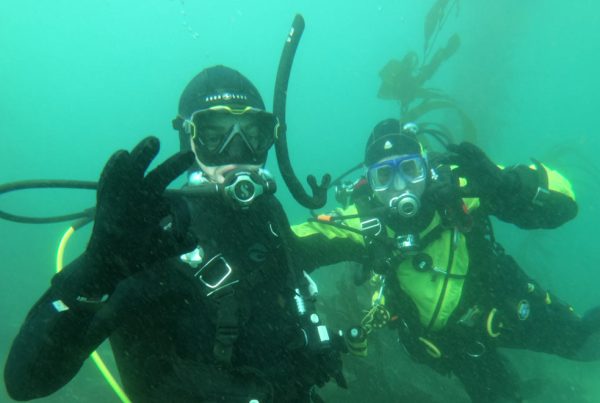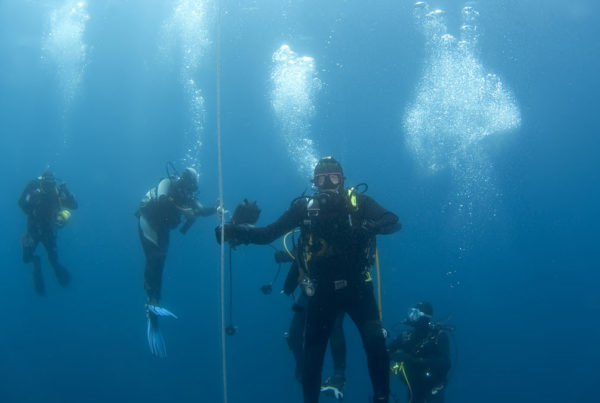We divers wear lead on nearly every dive to counteract buoyancy contributed by dive gear (usually from thermal protection) or our bodies or a combination of both. If we are going to stay underwater to explore underwater, we need to wear lead.
But less is better. Not only do you reduce the amount of sheer grunt effort in having to move the lead around, it is easier to dive with less lead. It is easier to balance your buoyancy and, most importantly, less lead makes you a safer diver. A diver with too much lead will yo-yo up and down with difficulty trying to stay in one spot vertically. A properly weighted diver will have to use their BCD less and glide more effortlessly throughout the dive.
There are a number of things you can do to keep your lead at just the point you need. All can add up to the perfect amount of weighting.
KNOW YOUR TRUE LEAD NEEDS
You should be neutrally buoyant at 15 feet deep with your dive tank at 500 p.s.i. Neutrally buoyant means you will rise slightly when you inhale and sink slightly on exhalation.
There use to be an old rule that with a 7mm wetsuit you would start with 10 percent of your body weight (example: a 200 pound diver would start with 20 pounds of lead). This has always been a very rough guideline and now largely obsolete as wetsuits are more buoyant than ever. Even so, a 200- pound man should not be wearing 30 pounds of lead! Start with 10 percent as a rough guide.
Try this: On the surface with a full tank of air (and regulator in your mouth and air on!) add weight until you submerge slowly on exhalation and rise until the water is at eye level on inhalation. Then better determine your needs after your first dive and spending time at your 15-foot safety stop with a nearly empty tank of air (500 p.s.i.). Add or subtract weight after the dive just one or two pounds at a time.
CONTROL YOUR BREATHING
The reason new divers often need more lead than more experienced divers is because they cannot control their breathing. Relax. If you are excited or frightened, you will tend to keep your lungs full contributing to buoyancy instability. Take the time to go into a relaxed breathing mode before proceeding with your dive.
WEAR LESS BUOYANT GEAR
Wear only the amount of thermal protection that you need. In Southern California in the late summer, some divers can get by without a hood. Perhaps thinner booties or gloves might be a good choice. And if you can get by with or afford a second, less thick wetsuit, by all means go for it.
Make sure your BCD fits. If your BCD is oversized or not tightened down properly it will tend to not deflate fully and you will need more lead.
Little things can also add up to a larger lead requirement. Are you carrying buoyant lights, cameras and other accessories? Perhaps your high-volume mask is contributing to your buoyancy.
And finally the biggest culprit in buoyant gear is the tank. Aluminum tanks are the worst but are the industry standard. Steel tanks are much more stable when it comes to lead weight requirements. (Note: If switching between aluminum and steel tanks, be sure to adjust your lead requirements accordingly.)
FIRST DIVE SYNDROME
Divers using a well-fitting wetsuit for the first dive of the day will often suffer from the “first-dive syndrome.” Air is trapped in the wetsuit and does not work its way out right away and often not until well into the dive. The wetsuit is more buoyant, necessitating the need for more lead. Your only options are to either add lead for the first dive and subtract it later, or get water into your wetsuit before the first dive, displacing the air.
One thing is for sure, you will be a lot more comfortable before during and after your dive if you are lugging less lead. And you’ll be a safer diver, too.










